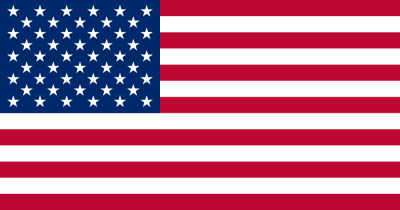Flag Day

Adopted as the flag of the United States of America by the Flag Resolution of 1777 enacted on 14 June, 1777.
The flag was first flown from Fort Stanwix, on the site of the present city of Rome, New York, on August 3, 1777. It was first under fire three days later in the Battle of Oriskany, August 6, 1777.
An official flag has a rise to run ratio of 1 to 1.9 [the flag should be 1.9 times as long as it is high] with the canton [the dark blue part] that rises over the top seven stripes with a run of 40% of the flag’s run.
The only time you will see a “correct” US Flag is if you see the official colors of a military unit. Most flags are 3’X5′ or 4’X6′ instead of 3’X5.7′ or 4’X7.6′.
Frances Bellamy, the Baptist minister and socialist who wrote the Pledge of Allegiance was from Rome, New York.



































15 comments
They don’t make them like they used to!
So, a US Destroyer apparently sideswipes a Merchant ship (or vice versa) 4 times it’s size in a known busy shipping area, in clear weather, causing significant damage to the destroyer & loosing 7 crewmen & 3 injured. The Merchant ship needs a lick of paint & a little panel beating.
Navy sailors remain missing; flooding on USS Fitzgerald stabilized
The missing sailors are probably in the flooded compartments on the destroyer. The container ship was probably unaware the destroyer was anywhere near them. There initial reports that the container ship was changing direction, but the destroyer is pretty nimble. It was reported to have occurred at 2:30am local, so people were probably not paying attention.
Container ships do not shift direction quickly. Regardless of any “laws of the seas”, they have right-of-way over anything smaller than an aircraft carrier based on sheer bulk and cumbersomeness. The laws of physics trump all.
Actually the laws say the the container ship had right of way. The more agile vessel is required to give way. Motor vessels give way to sailing vessels, because you don’t always have the ability to change course in a sail boat.
If a sailing vessel is approaching a container ship and expecting the container ship to give way, it’s not going to turn out well for the sailing vessel. Just sayin’. The laws of physics trump any laws of Man.
Given the Destroyer has High Res radar, SONAR, collision detection, night-vision equipment, etc. & knew it was a busy area, there is really not much of an excuse. Unless everyone on the bridge was playing poker, which isn’t an excuse anyway. On a clear night, even old MK-1 eyeballs would have seen the huge ship & it’s running lights.
And Badtux, would you please stop using that tr*** word! Really sick of it. Not only has POTUS destroyed the English language with his inane tweeting & TV interviews, his name ruins what was a useful word. Hmmph! 😉 😆
Your example would be classed as “an act of God”, i.e. an actual accident, Badtux, with no liability assessed as neither vessel would have the capability of avoiding the accident. Outside of races, sailing vessels tend to avoid the company of other vessels except when docking, and they normally shift to an auxiliary motor for that procedure.
The destroyer was at fault, Kryten, no doubt about that. Now it is a matter of how many people waded into deep kimchi. The captain obviously, and probably most of the bridge crew and lookouts. A lot of people had to have screwed up for this to happen.
A former Navy buddy of mine is convinced that they’ll blame it on a deck ape:
“The Official Navy inquiry has determined that Seaman Recruit Cletus Pitts, formerly of Buttfuck, Alabama, was in control of the wheel house when the incident occurred. The Officer of the Day was cleared of all charges after he claimed the sun was in his eyes.”
At 1AM in the morning.
Heh.
The preliminary damage assessment of the Japanese Coast Guard seems to indicate that the container ship came at the destroyer from the right rear and pushed it out of the way.. It would have been the starboard watch who should have noticed the container ship, as the bridge couldn’t really see it
Sounds like my Navy buddy might be right, then :).
With 7 dead, there is going to be a lot of blame to spread around, but, yeah, the guy(s) on the starboard watch are definitely in kimchi.
It’s confirmed that the Fitzgerald is an Arleigh Burke DDG that has a collision avoidance system that should have been operational in such a heavily trafficked area & that the bridge crew should have been on alert. If they were quite close to each other (they shouldn’t have been that close), it could have been a navigation error on the part of the cargo ship, which sounded the collision alarm on the DDG & the helmsman over reacted causing the DDG to swing too hard away (or the wrong way), forcing an error on the part of the DDG.
Collisions at sea are not rare. They happen daily, but most are minor.
I suppose we’ll have to wait for the final report to know.
It was a destroyer, which are designed to be fast and nimble. Hard aport, full speed ahead! should have been sufficient to avoid the collision. The damage sounds like the destroyer was crossing the freighter’s path. I’m having a hard time figuring out how the freighter could have overtaken the destroyer if the crew had been semi-alert.
If a DDG can’t detect a container ship, which isn’t exactly small (SNRK!), how it is supposed to detect fast-flying approaching enemy fighter jets? (Cue eyerolls). Sounds like some folks were asleep at their posts…
Could be sleep, or they turned it off because it was constantly alarming in Tokyo Harbor because of all the traffic.